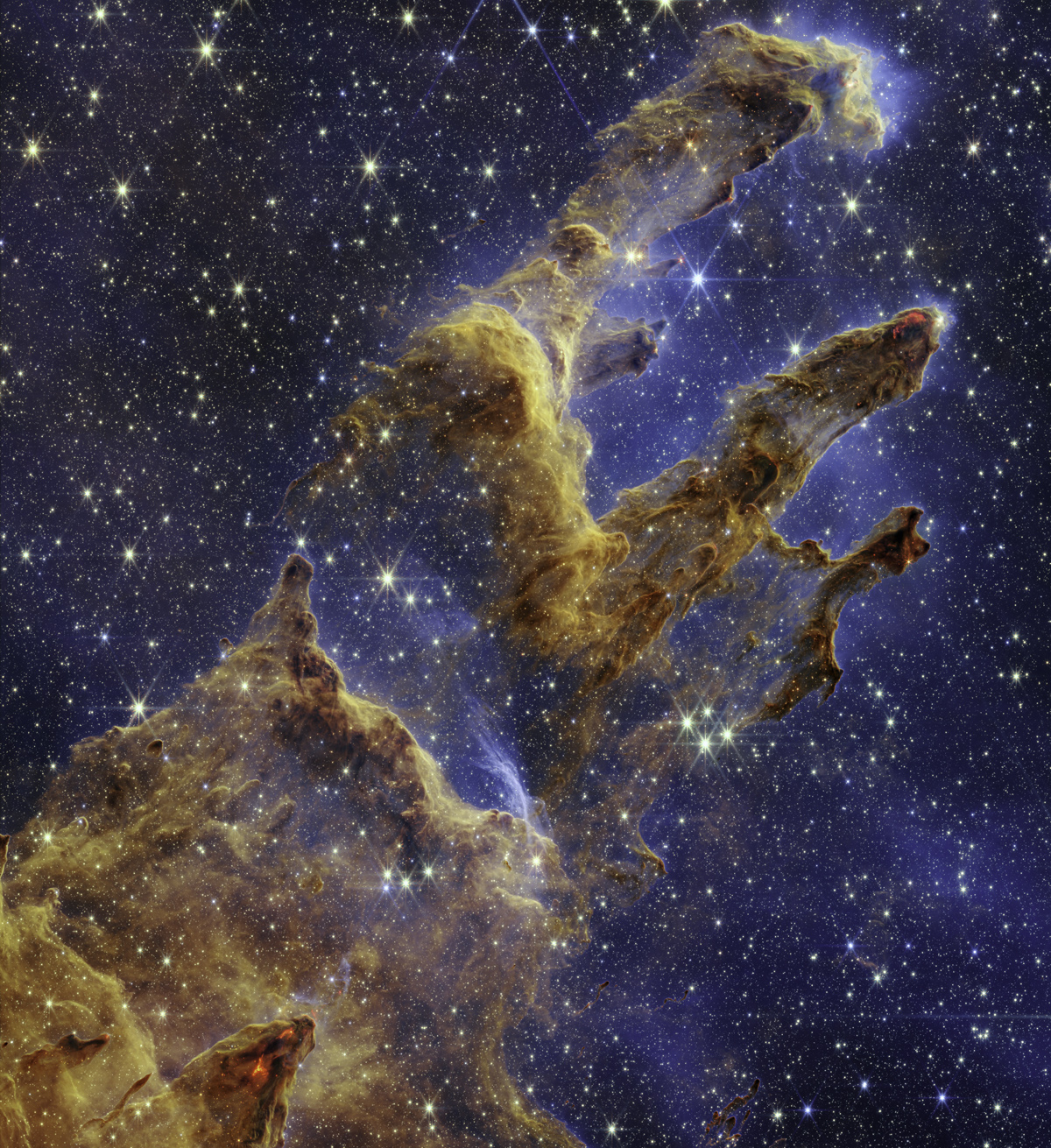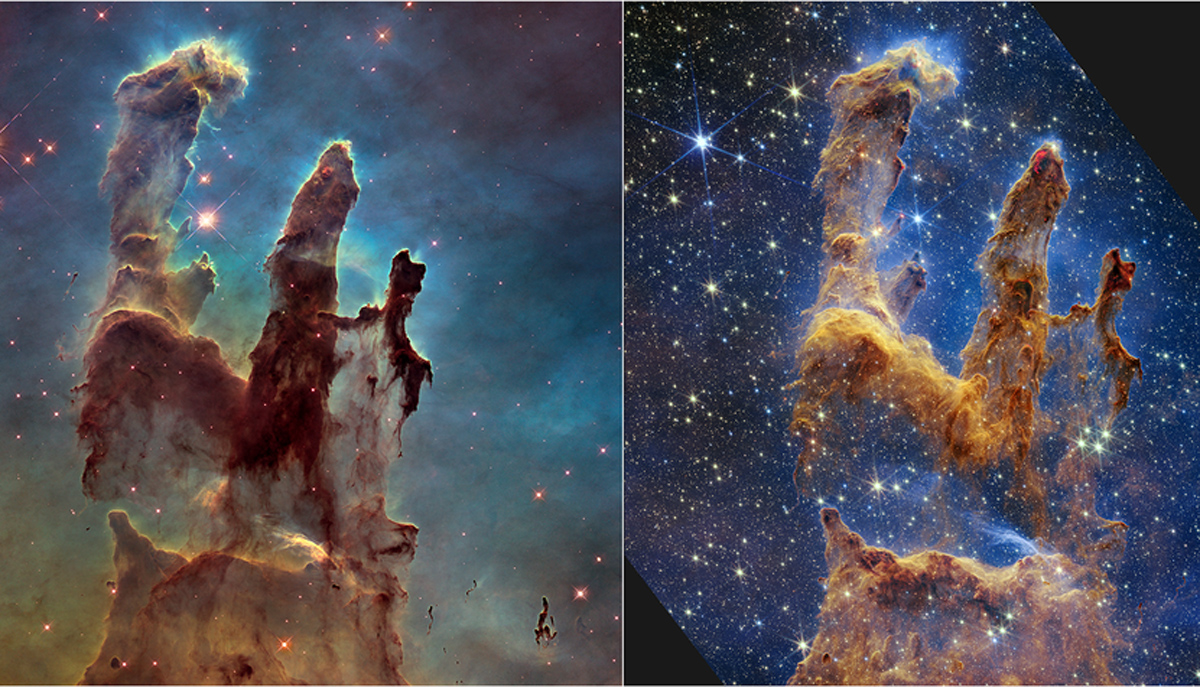Magnificent Pillars of Creation sparkle in new James Webb Space Telescope image
The "creation" has been revealed in stunning detail.
The Hubble Space Telescope made them famous, but the new James Webb Space Telescope is now truly bringing the iconic Pillars of Creation to life, revealing hundreds of newly born stars sparkling inside the famous dust clouds.
Located in the constellation Serpens, some 7,000 light-years away, the magnificent Pillars of Creation are column-shaped clouds of interstellar dust and gas that are part of the Eagle Nebula. The first image of them, taken in 1995 by the James Webb Space Telescope's predecessor, the Hubble Space Telescope, stunned astronomers with its intimidating beauty.
The new photograph obtained by Webb's Near-Infrared Camera (NIRCam) reveals the pillars in much greater detail, with fine structures of the clouds emerging with clarity and hundreds of previously invisible stars sparking throughout the image. Many of these stars were born just a few hundred thousand years ago, NASA said in a statement.
Related: The James Webb Space Telescope never disproved the Big Bang. Here's how that falsehood spread.

Thanks to its ability to detect infrared light, which is essentially heat, Webb can peer through the clouds and witness protostars springing into life from the coalescing dust. Hubble, with its much weaker infrared detectors, attempted to look inside the nebula as well, but Webb's results far exceed those attempts. Webb's views not only deliver a new level of detail and sharpness, but the telescope also sees many more stars inside the clouds and throughout the surrounding universe.
Webb's views will "help researchers revamp their models of star formation by identifying far more precise counts of newly formed stars, along with the quantities of gas and dust in the region," NASA said in the statement. "Over time, they will begin to build a clearer understanding of how stars form and burst out of these dusty clouds over millions of years."
While Hubble's Pillars are dark and menacing, rising against a cloudy backdrop of a rather empty universe, Webb's appear softer, more finely structured, with bright red "lava flows" framing the edges of some of the clouds. These "lava flows'' are, in fact, material ejected by the forming stars, the European Space Agency (ESA), which cooperates with NASA on the James Webb Space Telescope project, said in a statement.
Get the Space.com Newsletter
Breaking space news, the latest updates on rocket launches, skywatching events and more!

"Young stars periodically shoot out supersonic jets that collide with clouds of material, like these thick pillars," ESA wrote. "This sometimes also results in bow shocks, which can form wavy patterns like a boat does as it moves through water. The crimson glow comes from the energetic hydrogen molecules that result from jets and shocks."
The Eagle Nebula is part of the Milky Way galaxy. Webb is able to see the Pillars against the thick band of our galactic home, which obscures the view of the more distant universe.
Follow Tereza Pultarova on Twitter @TerezaPultarova. Follow us on Twitter @Spacedotcom and on Facebook.
Join our Space Forums to keep talking space on the latest missions, night sky and more! And if you have a news tip, correction or comment, let us know at: community@space.com.

Tereza is a London-based science and technology journalist, aspiring fiction writer and amateur gymnast. Originally from Prague, the Czech Republic, she spent the first seven years of her career working as a reporter, script-writer and presenter for various TV programmes of the Czech Public Service Television. She later took a career break to pursue further education and added a Master's in Science from the International Space University, France, to her Bachelor's in Journalism and Master's in Cultural Anthropology from Prague's Charles University. She worked as a reporter at the Engineering and Technology magazine, freelanced for a range of publications including Live Science, Space.com, Professional Engineering, Via Satellite and Space News and served as a maternity cover science editor at the European Space Agency.









